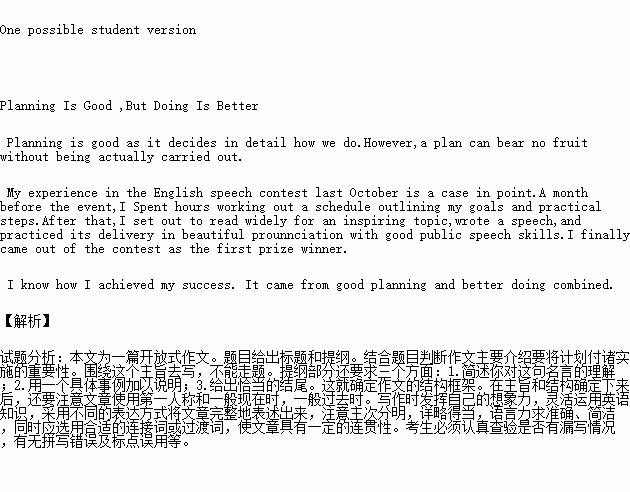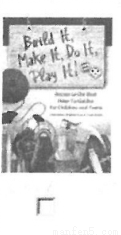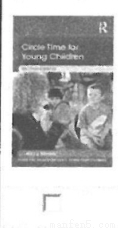题目内容
书面表达
“Planning is good ,but doing is better”是一句英国名言。请以此为题目用英语写一篇100-120词的短文。
要求如下:
1.简述你对这句名言的理解;
2.用一个具体事例加以说明;
3.给出恰当的结尾。
注意:1.文章的标题已给出(不计词数):
2.文中不得以任何形式透露地区、学校、老师或同学姓名等真实信息,否则按作弊行为认定。
Planning Is Good ,But Doing Is Better
B
Below are search record from a university library’s database

Quick Search l Category l Full Text l Advanced


Search full text books for children
Displaying 1 to 100 of 639 titles for children where Category is Education

Build it ,Make it ,Play it ! Guides for Children and Teens Bomhold Catharine ;Elder Terri,2004 l ABC-CLIO Series: Children’s and Young Adult Literature Reference
For busy librarians and educators ,finding instructions for projects ,activities ,sports ,and games that children and teens will find interesting is a constant challenge, This guide is a time-saving,one-stop…. Read this book l View details l Add to Collection |
Circle Time for Young Children Mosley Jenny,2014 l Taylor and Francis Series: Essential Guides for Early Years Practitioners
Jenny Mosley’s quality circle time model involves setting up an on-going, timetable process Of circle-meeting for adults and children ,As a basis for teaching relationship skills, building up self-esteem….. Read this book l View details l Add to Collection |
Connecting Animals and children in Early Childhood Selly Patty Born,2014 l Redleaf Press
Understand the value of connecting animals and children .From familys pets and wild animals to toys ,stuffed animal ,and media images ,animals are a central part of every child’s world .This book examines…. Read this book l View details l Add to Collection |
Education and Disadvantaged Children and Young People Matsumoto Mitsuko; Brool Colin,2013 l Bloomsbury Publishiing Series: Education as a Humanitarian Response
Do street children go ti school ,and if not ,why not? What kind of education can be ‘meaningful’ to young people affected by conflict? The contributors explore groups of children and young people who have…. Read this book l View details l Add to Collection |
Children with School problme:A Physkian’s Manual
The children paediatric Society; Andrews Debra;Mahoney WilliamJ,2012 I wiley Available The physician’s guide to diagnosing and treating learning disabilities in children.1 to 10 Canadians have a learning disability,and doctors must be able to idcntify,diagnose,trear,and manage children… Read this book I view details I Add to Collection |
Songs in Their Heads:Music and Its Meaning In Children’s Lives Campbell Patricia Shehan,1989 I Oxford University Press Available This book explores the intrest and needs of children in their expressed thounts and actual “musicking”behaviours, This text examines the songs they sing,the ryhthms… Read this book I view details I Add to Collection |
Young Children as Artists:Art and Design in the Earty Years and Kay Stage 1 Tutchell Suzy 2014 I Taylor Francis Available From the monment a child is bom,they intctract with the world,looking at colours,feeding texrures;constructing mental and physical images of what they see and experience.Within all early years… Read this book I view details I Add to Collection |
Big Ideas for Littles Kids:TEAching Philosophy Through Children’s Liferature Wartnberg Thomas E.2014 I Rowman&Littlefield Publishers Available Big Ideas for Little Kids includes everything a teacher,or a college student needs to teach philosophy to elementary school children from picture books.Written in a clear and accessible style… Read this book I view details I Add to Collection |
1.Suppose you are doing research on children’s relationship skills,you may want to read.
A.Circle Time for Young Children
B. Children with School Problems:A Phsysician’s Manual
C.Education and Disaddvantaged Children and Young People
D.Build It,Make It,Do It,Play It!Guides for Children and Teens
2.Which book would you recommend to someone interesten inchildren’s mental imanges?
A.Connecting Animals and Children in Early Childhood.
B.Songs in Their Heads:Music and Its Meaning in children’sLives.
C.Big Ideas for Little Kids: Teaching Philosophy Through children’s Literature.
D.Young Children as Artists:Art and Design in the Early Years and Key Stage 1.
3.How many books published in 2015 are found in this search?
A. 9. B.90. C.118. D.290.
4. Children with School Problems:A Phsysician’s Manua lis most likely intended for.
A. educators B. librarians C. doctors D.artists



 Available
Available





